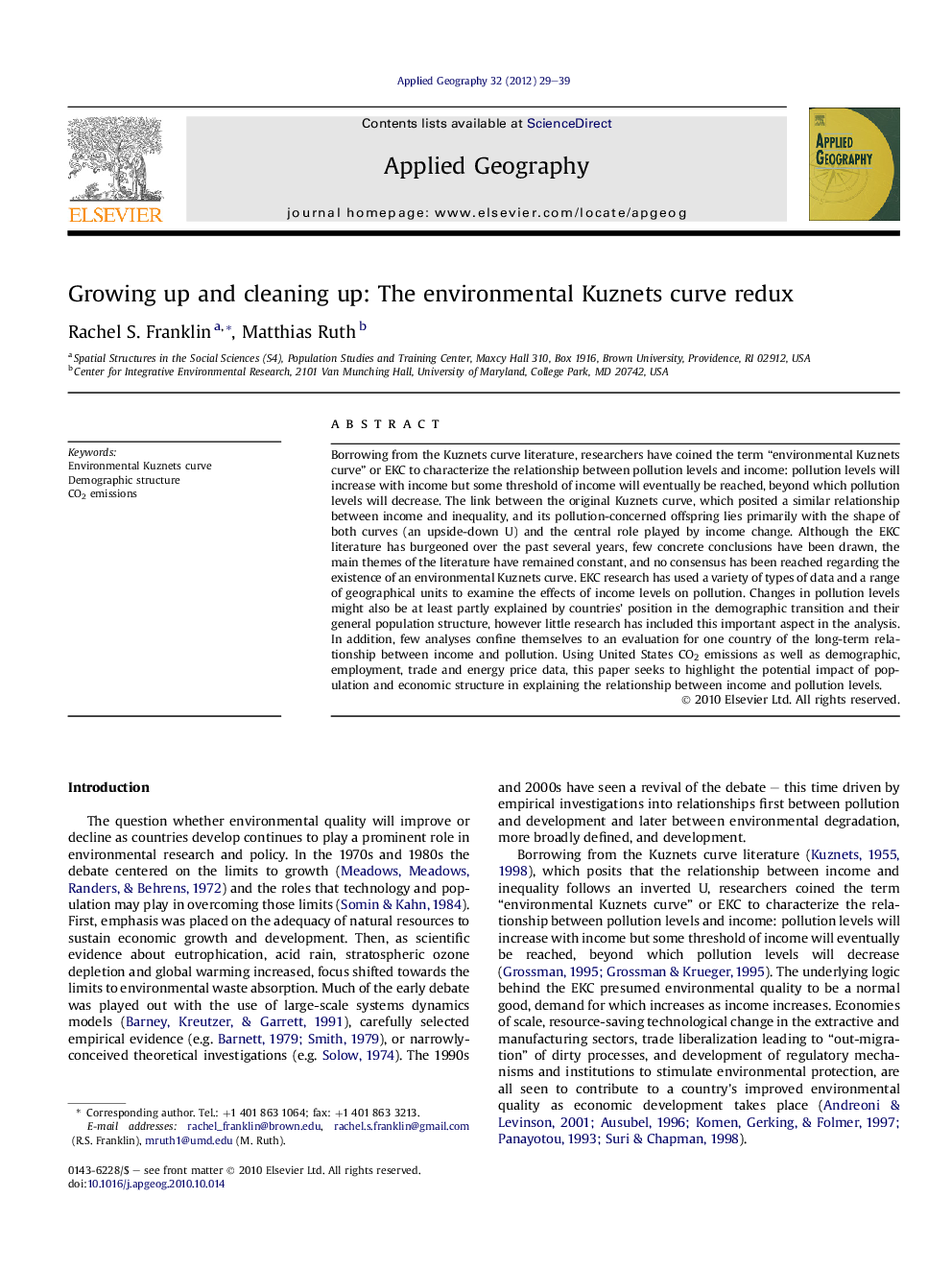| کد مقاله | کد نشریه | سال انتشار | مقاله انگلیسی | نسخه تمام متن |
|---|---|---|---|---|
| 83514 | 158724 | 2012 | 11 صفحه PDF | دانلود رایگان |

Borrowing from the Kuznets curve literature, researchers have coined the term “environmental Kuznets curve” or EKC to characterize the relationship between pollution levels and income: pollution levels will increase with income but some threshold of income will eventually be reached, beyond which pollution levels will decrease. The link between the original Kuznets curve, which posited a similar relationship between income and inequality, and its pollution-concerned offspring lies primarily with the shape of both curves (an upside-down U) and the central role played by income change. Although the EKC literature has burgeoned over the past several years, few concrete conclusions have been drawn, the main themes of the literature have remained constant, and no consensus has been reached regarding the existence of an environmental Kuznets curve. EKC research has used a variety of types of data and a range of geographical units to examine the effects of income levels on pollution. Changes in pollution levels might also be at least partly explained by countries’ position in the demographic transition and their general population structure, however little research has included this important aspect in the analysis. In addition, few analyses confine themselves to an evaluation for one country of the long-term relationship between income and pollution. Using United States CO2 emissions as well as demographic, employment, trade and energy price data, this paper seeks to highlight the potential impact of population and economic structure in explaining the relationship between income and pollution levels.
► The statistical results are consistent with the hypothesis of an EKC but show a “rebound effect”.
► The elderly dependency ratio is found to be negatively correlated with per capita CO2 emissions.
► For the period 1950–2000 we find that as income inequality increases, emissions increase.
► Replacing GPI for GDP in the regression equation we no longer find a correlation between wealth and emissions.
Journal: Applied Geography - Volume 32, Issue 1, January 2012, Pages 29–39